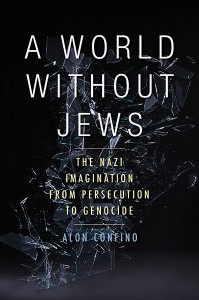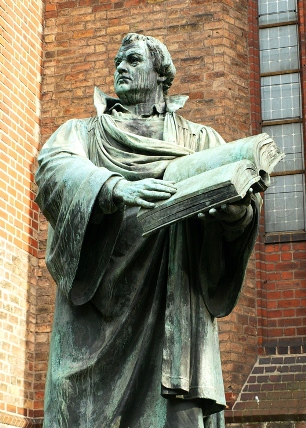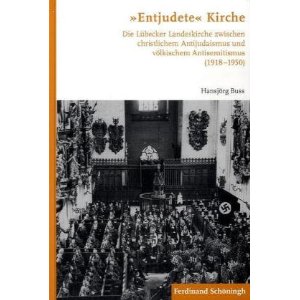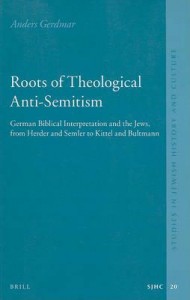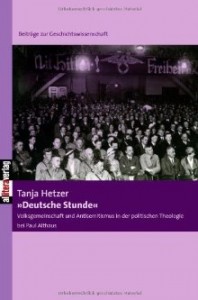Contemporary Church History Quarterly
Volume 30, Number 4 (Winter 2024)
Film Review: Bonhoeffer: Pastor, Spy, Assassin, directed by Todd Komarnicki (Angel Studios, 2024)
By Christopher Probst, Washington University in St. Louis, Continuing & Professional Studies
Introduction
On the morning of April 9, 1945, Dietrich Bonhoeffer, age 39, was hanged on a gallows at Flossenbürg concentration camp. Admiral Wilhelm Canaris and General Hans Oster, key conspirators in the military resistance against Hitler, met with the same fate that day, as did several others. Dietrich’s brother, Klaus, and brothers-in-law Hans von Dohnanyi – who had recruited Dietrich into the resistance – and Rudiger Schleicher were executed the same week. Almost from the beginning of Todd Komarnicki’s sincere but problematic new film, Bonhoeffer: Pastor, Spy, Assassin, Bonhoeffer’s end is in focus. This review centers on the film’s historical content and its narrative, but also includes an examination of controversies surrounding its marketing and message.
The Film’s “Bonhoeffer” and Bonhoeffer the Man
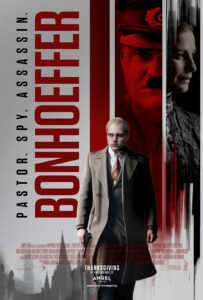 The film, which is beautifully shot and scored, but at times laden with clunky dialogue, begins with a glimpse into the domestic life of the Bonhoeffer family (warm and loving, and also tranquil until Dietrich’s beloved older brother Walter is killed in the Great War). Yet it largely focuses on Bonhoeffer’s involvement in a plot to assassinate Adolf Hitler, who became chancellor of Germany in 1933. The film flashes back and forth, from Bonhoeffer’s imprisonments in Buchenwald and Flossenbürg to the years preceding the war. It tells the tale of a young theologian whose participation in the 1944 plot to assassinate the Führer and overthrow the Nazi regime seems nearly inevitable. The flashbacks often muddle both the chronology and the film’s interpretation of Bonhoeffer’s de-contextualized words.
The film, which is beautifully shot and scored, but at times laden with clunky dialogue, begins with a glimpse into the domestic life of the Bonhoeffer family (warm and loving, and also tranquil until Dietrich’s beloved older brother Walter is killed in the Great War). Yet it largely focuses on Bonhoeffer’s involvement in a plot to assassinate Adolf Hitler, who became chancellor of Germany in 1933. The film flashes back and forth, from Bonhoeffer’s imprisonments in Buchenwald and Flossenbürg to the years preceding the war. It tells the tale of a young theologian whose participation in the 1944 plot to assassinate the Führer and overthrow the Nazi regime seems nearly inevitable. The flashbacks often muddle both the chronology and the film’s interpretation of Bonhoeffer’s de-contextualized words.
Bonhoeffer did provide nearly contemporaneous early details of the first deportation of Jews to “the east” and was involved in “Operation Seven,” an intricate and successful plot to rescue fourteen Jews. Yet the extent of his involvement in resistance efforts, including “Operation Valkyrie,” the July 20, 1944 assassination attempt on Hitler’s life (but not the March 21, 1943 Gersdorff plot depicted in the film), has been debated extensively by Bonhoeffer scholars.[1] In any case, he was arrested in April 1943 for plotting to rescue Jews, using his travels outside of Germany for matters unrelated to German military intelligence, and abusing his position in the Abwehr to help Confessing Church pastors escape military service. He was initially imprisoned in the Wehrmacht’s Tegel prison in Berlin.
Though Bonhoeffer knew of efforts to topple the Hitler regime as early as 1938, his tangential involvement in Operation Valkyrie was the occasion of Dietrich’s ultimate demise. A couple of months after only one of the two planned bombs exploded near Hitler and injured but did not kill him, the Gestapo discovered documents implicating especially Dohnanyi but also Bonhoeffer. Shortly thereafter, Dietrich was moved to a notorious prison cellar at Gestapo headquarters in Berlin; in February 1945, he was transferred to Buchenwald, then moved to the Flossenbürg concentration camp.
In a pivotal sequence, the film cuts back and forth breathlessly between the aborted March 21, 1943 Gersdorff assassination attempt and Bonhoeffer’s imagined practice sermon at Abyssinian Baptist Church in Harlem in 1939. The scene, which, as happens many times in the film, conflates various writings penned by the young theologian, highlights the famous quote from The Cost of Discipleship (1937): “When Christ calls a man, he bids him come and die.” One implication seems to be that Bonhoeffer was prophetic – or at least that he somehow had a sense, even before the war began, that participating in resistance against Hitler and the Nazis would lead to his own death more than five years later. Another takeaway is the central message that the film wants to convey: that Christians should be willing to die (or at least be willing to suffer greatly) for their faith.
Yet, while Bonhoeffer was indeed executed by direct order of Hitler in April 1945, it was Rudolf-Christoph von Gersdorff who carried explosives into the Zeughaus in Berlin; he intended to tackle Hitler just before the bomb, with its ten-minute fuse, was set to explode. The conspirators had expected Hitler to spend a significant amount of time at the Prussian war museum, but instead he hurried through the exhibition, prompting Gersdorff to defuse the bomb in the lavatory (he only had a couple of minutes to do so).[2] It was Claus von Stauffenberg who carried the bomb into the “Wolf’s Lair” in East Prussia on July 20, 1944.
This is not to say that Bonhoeffer lacked courage; his participation in the daring activities that he carried out as a spy for the resistance in the Abwehr was of course extremely courageous and led ultimately to his death by hanging. But the desire to put Bonhoeffer closer to the center of this story than he was distorts the historical picture even if it meets a perceived need to put Dietrich’s endorsement of violent means at the center of the narrative. This distortion also minimizes his efforts both to save the lives of European Jews as well as to discern and proclaim some theological meaning not only about martyrdom, but about what it means to live in the world as a follower of Christ.
The imagined Harlem sermon also includes a reference to the shooting of 33,000 Jews near Kyiv – the Babyn Yar massacre, which did not occur until September 1941. Dietrich’s sojourns in Harlem were indeed central to his thinking, especially about matters related to race. Yet, the conflation of events that took place closer to the height of the genocide (most Jews who were killed during the Holocaust died in 1942 and 1943) with occurrences and writings from the summer before the war downplays the development of Bonhoeffer’s theology; so much of his thought was a painstaking yet direct response to what he was witnessing with his own eyes (and hearing about from his contacts in the resistance).
Victoria Barnett, a leading authority on the life and work of Bonhoeffer and past editor for this journal,[3] thinks we should read Bonhoeffer in a different way than do so many films and books that insist on making him an uncomplicated hero; he was “one decent human being who understood better than any of us that in evil times, we must remain faithful … for the sake of future generations ….” Ferdinand Schlingensiepen urges that “Bonhoeffer did not want to be venerated; he wanted to be heard. Anyone who puts him on a lonely pedestal is defusing that which … makes a thoughtful encounter with him worthwhile.”[4] Bonhoeffer was a complex individual and theologian; he was also, above all else, a thinker and a writer. Bonhoeffer never justified his participation in the assassination plot on biblical or theological grounds – indeed, he believed he needed to ask forgiveness for it.
Historical Context
The film also gets some significant aspects of the broader historical context wrong. Crucially, as in Eric Metaxas’s Bonhoeffer biography, Hitler and the Nazi Party leadership are portrayed as taking over the German Protestant Church and, apparently, never relinquish their hold over it, creating a “Reich Church.”[5] Meanwhile, the Confessing Church – here led by Bonhoeffer and Niemöller – courageously fights the Nazis, especially their anti-Jewish policy and actions, including the Holocaust. This misleading narrative suggests that there were two sides of the Church Struggle: the (apparently fearless) Confessing Church and the “Reich Church,” which in the film represents the remainder of the Deutsche Evangelische Kirche (German Protestant Church, DEK) who supposedly had been coopted by Hitler’s “brute nationalism.”
This version of the Church Struggle fuses with the Reich Church the significant minority faction of the DEK, the German Christians, who eagerly embraced many aspects of Nazism and created and used “de-Judaized” Bibles and hymnals. Yet it omits altogether the majority of German Protestants, who chose not to affiliate with either the German Christians or the Confessing Church. It also elides the fact that Hitler eventually gave up on the idea of a Reich Church. In 2010, Victoria Barnett critiqued the similarly-misplaced portrait of the German Protestant Church during the Third Reich in Metaxas’s Bonhoeffer biography in this journal.
Further, as many scholars have demonstrated, the German Protestant myth of the Church Struggle as a courageous fight against Nazism, which was proliferated after the war chiefly by pastors and theologians determined to paint their actions and that of their churches in the most benign light, has been refuted. Many of the churches in fact cooperated with Hitler, in many cases promulgating Nazi ideology, including antisemitism.[6] Bonhoeffer’s evolving views about Jews and Judaism and certainly his later embrace of a (enigmatic but potentially very potent) “religionless Christianity” were held by very, very few Protestant Christians of his day. As our own Kyle Jantzen related in 2015, “For better or worse, Bonhoeffer has received more attention than his historical roles in the German church struggle, resistance, or ecumenical world would merit.”
Other inaccuracies in the film are characterized as intentional, with various reasons offered by the filmmakers (e.g., a depicted event being a “metaphor” or a means of condensing storytelling for a film). It is common for filmmakers to conflate events for the purpose of telling a story more efficiently. The scene with Bonhoeffer jamming in a jazz club with Black musicians, for example, did not happen; yet it is certainly the type of event that could have happened at the time and comports with what we know about Bonhoeffer: he was a skilled pianist and his time in Harlem really did expand his musical tastes (as well as his theology).[7]
Yet, other scenes are unintentionally inaccurate or “metaphorical.” When Martin Niemöller recites the (now famous) poem “First they came for the socialists …” he does so in a thunderous sermon in prophetic fashion, as if he uttered those famous words before the Nazis “came for him.” In the film, the sermon is apparently given in 1944 even though Niemoller was arrested in 1937 and would have been in Dachau in 1944. (the film’s Niemöller states during the sermon that he had been their pastor “for thirteen years”; Niemöller became a pastor at Berlin-Dahlem in 1931). What came to be known as Niemöller’s “confession” was not uttered until after the war, and thus after his seven-year incarceration in first a Berlin prison, then Sachsenhausen, and finally Dachau.
A staunch nationalist, the pastor of the Berlin Dahlem Confessing Church neither resisted nor even opposed the regime’s persecution of Jews and other minorities from 1933 to July 1937 (when he was arrested). Placing the words of the famous poem in his mouth in 1944 obscures the historical reality of a man who only realized his sins against Jews and other victims of Nazism after the Holocaust. This heroizing of Niemöller aligns with the film’s portrait of Bonhoeffer. The audience is robbed of the more complex picture of this complicated man with deep German nationalist sympathies who dissented against the regime in defense of the German Protestant Church, not Jews and other victims of Nazism, a man who recognized his sins against the latter only later in life (gradually, beginning at Dachau, but continuing for decades thereafter).[8]
Controversial Marketing
As the film was promoted in the weeks before yet another contentious US presidential and congressional election, and was released just weeks afterward, its marketing campaign engendered significant controversy. A post on X (formerly Twitter) by the distribution company, Angel Studios, still available as of this writing, reads in part “The battle against tyranny begins now! Watch Bonhoeffer: Pastor. Spy. Assassin. in theaters November 22! …”; the text appears above a poster with Bonhoeffer carrying a gun.
An international group of Bonhoeffer scholars wrote and circulated a petition condemning such abuses of Bonhoeffer’s legacy; it has to date garnered thousands of signatures. Similarly, many of the German actors in the film, the Board and staff members of the Bonhoeffer Haus in Berlin as well as members of Bonhoeffer’s extended family issued statements condemning misuses of Bonhoeffer’s life and work.
Misinterpretations or misuses of Bonhoeffer are certainly not confined to the religious right. In Charles Marsh’s biography, Strange Glory: A Life of Dietrich Bonhoeffer, Bonhoeffer has a romantic attraction to Eberhard Bethge, a notion that, however close their friendship, is belied by weightier evidence to the contrary. In another Bonhoeffer biography, the authors contend that Bonhoeffer was a committed pacifist.[9]
Yet, Victoria Barnett argues that Bonhoeffer’s views on the quest for peace conflicted with his participation in the resistance in ways that he could never fully resolve. The coupling of an image of Bonhoeffer with a gun and the descriptor “assassin” in the film’s title is irresponsible, as it turns the Berlin theologian into someone he was not, at a time of heightened political polarization in the US and Europe and war in Ukraine and the Middle East.
Conclusion
Bonhoeffer: Pastor, Spy, Assassin has many flaws, not least of which is the last descriptor in its title. The portrayal of the German Protestant Church lacks nuance; the elevation of thematic messages over chronology leads at times to significant misinterpretations of Bonhoeffer, Niemöller, and the Holocaust. Its pre-release marketing campaign included some disconcerting messaging, especially as it coincided with a highly contentious US presidential election during which one of the candidates was the target of an assassination attempt. Thankfully, despite its imperfections, the film is infused with an unvarnished appreciation for its protagonist – who is indeed worthy of admiration – and its filmmakers clearly care about the perils of antisemitism and racism. We would all do well to imbibe these messages, however flawed their presentation.
If one is looking for a more accurate portrayal of Bonhoeffer’s life, including his political resistance efforts, the International Bonhoeffer Society has a good list of documentaries and films. Better still, one might get to know Bonhoeffer a bit better by reading Schlingensiepen’s excellent biography[10] or by delving into some of Bonhoeffer’s writings.
Notes:
[1] Lori Brandt Hale and W. David Hall, eds., Dietrich Bonhoeffer, Theology, and Political Resistance (Lanham, MD: Lexington Books, 2020)
[2] Ferdinand Schlingensiepen, Dietrich Bonhoeffer 1906-1945: Martyr, Thinker, Man of Resistance, (Bloomsbury, 2010) 312-313.
[3] Dietrich Bonhoeffer, Dietrich Bonhoeffer Works, ed. Victoria J. Barnett, 16 vols. (Minneapolis: Fortress, 1995–2014).
[4] Schlingensiepen, Dietrich Bonhoeffer 1906-1945, xvii.
[5] Eric Metaxas, Bonhoeffer: Pastor, Martyr, Prophet, Spy (Nashville: Thomas Nelson, 2010).
[6] Christopher J. Probst, Demonizing the Jews: Luther and the Protestant Church in Nazi Germany (Bloomington: Indiana University Press, 2012), 10.
[7] See Reggie Williams’s insightful take on the film, which includes a thoughtful critique of its portrayal of Black and Jewish people. “The Tropes that Birth a Hero,” Christian Century, November 25, 2024, https://www.christiancentury.org/features/tropes-birth-hero.
[8] Matthew D. Hockenos, Then They Came for Me: Martin Niemöller, The Pastor who Defied the Nazis (New York: Basic Books, 2018).
[9] Mark Thiessen Nation, Anthony G. Siegrist, and Daniel P. Umbel, Bonhoeffer the Assassin? Challenging the Myth, Recovering His Call to Peacemaking (Grand Rapids: Baker Academic Publishing, 2013).
[10] Schlingensiepen, Dietrich Bonhoeffer 1906-1945.

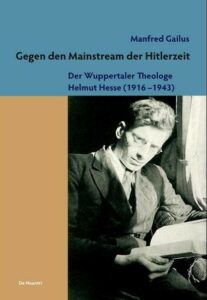 Yet, over the past few decades, scholars like Eberhard Röhm and Jörg Thierfelder, Manfred Gailus, and Gerhard Lindemann – whose body of work together generally affirms the consensus view that the German Protestant Church as a whole did very little to resist Nazism or to speak out publicly on behalf of the victims of the Shoah – have published works highlighting the exploits of individual Protestants who, to use Bonhoeffer’s phrase “[fell] into the spokes of the wheel.” These courageous Protestants include not only Niemöller and Bonhoeffer, but also
Yet, over the past few decades, scholars like Eberhard Röhm and Jörg Thierfelder, Manfred Gailus, and Gerhard Lindemann – whose body of work together generally affirms the consensus view that the German Protestant Church as a whole did very little to resist Nazism or to speak out publicly on behalf of the victims of the Shoah – have published works highlighting the exploits of individual Protestants who, to use Bonhoeffer’s phrase “[fell] into the spokes of the wheel.” These courageous Protestants include not only Niemöller and Bonhoeffer, but also 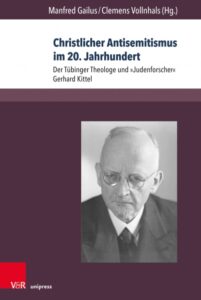 In a wide-ranging introduction, the editors skillfully contextualize the issues surrounding Protestant anti-Judaism and antisemitism during the Third Reich. Gailus and Vollnhals use the national reactions to the commemoration of the 500th anniversary of the German Protestant Reformation as a jumping off point. These 2017 commemorations included – for the first time in a Luther jubilee year – critical analysis of the reformer’s “Judenschriften,” of which the deeply anti-Judaic and antisemitic Von den Juden und ihren Lügen (On the Jews and Their Lies) stands out. Very soon after these commemorations ended, a group of historians, church historians, theologians, and religion scholars met in Dresden to assess Kittel’s biography, work, and legacy (7), which occasioned the present volume. Though Luther and Kittel lived and worked in vastly different historical contexts, their oeuvres stir similar debates about animus toward Jews and Judaism in Protestant theology and their real-world effects (8). Despite some overlap and repetition, the essays that follow address these issues in a comprehensive and satisfying fashion.
In a wide-ranging introduction, the editors skillfully contextualize the issues surrounding Protestant anti-Judaism and antisemitism during the Third Reich. Gailus and Vollnhals use the national reactions to the commemoration of the 500th anniversary of the German Protestant Reformation as a jumping off point. These 2017 commemorations included – for the first time in a Luther jubilee year – critical analysis of the reformer’s “Judenschriften,” of which the deeply anti-Judaic and antisemitic Von den Juden und ihren Lügen (On the Jews and Their Lies) stands out. Very soon after these commemorations ended, a group of historians, church historians, theologians, and religion scholars met in Dresden to assess Kittel’s biography, work, and legacy (7), which occasioned the present volume. Though Luther and Kittel lived and worked in vastly different historical contexts, their oeuvres stir similar debates about animus toward Jews and Judaism in Protestant theology and their real-world effects (8). Despite some overlap and repetition, the essays that follow address these issues in a comprehensive and satisfying fashion.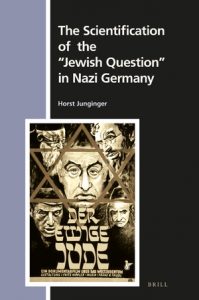 A few key conceptions and realities are at the forefront of Junginger’s study, which is a translation of a revised version of the author’s Habilitation thesis. First, the author seeks to demonstrate that Nazi-era “Jew research,” which purported to pose scholarly answers to the “Jewish Question” but in fact aimed at supporting anti-Jewish policies – was carried out at German universities in a manner that mutually reinforced religious and racial antisemitism. Thus, the book focuses on the religious aspect of modern antisemitism – even while recognizing with great care that “religious stereotypes coalesce with a racial explanation of the world” (ix). Second, the University of Tübingen’s centuries-long role as “an intellectual stronghold against Judaism” (x) culminating in its essential function as a locus of Nazi Judenforschung, is emphasized. Finally, theoretical and practical antisemitism converged during the Holocaust, as typified here by Junginger’s examination of the biographies of roughly a dozen war criminals who, the author demonstrates, were responsible for the deaths of several hundred thousand European Jews during the Shoah.
A few key conceptions and realities are at the forefront of Junginger’s study, which is a translation of a revised version of the author’s Habilitation thesis. First, the author seeks to demonstrate that Nazi-era “Jew research,” which purported to pose scholarly answers to the “Jewish Question” but in fact aimed at supporting anti-Jewish policies – was carried out at German universities in a manner that mutually reinforced religious and racial antisemitism. Thus, the book focuses on the religious aspect of modern antisemitism – even while recognizing with great care that “religious stereotypes coalesce with a racial explanation of the world” (ix). Second, the University of Tübingen’s centuries-long role as “an intellectual stronghold against Judaism” (x) culminating in its essential function as a locus of Nazi Judenforschung, is emphasized. Finally, theoretical and practical antisemitism converged during the Holocaust, as typified here by Junginger’s examination of the biographies of roughly a dozen war criminals who, the author demonstrates, were responsible for the deaths of several hundred thousand European Jews during the Shoah.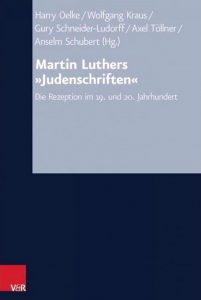 The volume is a product of the conference “The Reception of Luther’s ‘Judenschriften’ in the 19th and 20th Centuries,” which was held at Erlangen University in October 2014. The contributors, who number more than a dozen, represent fields that include Protestant church history, Protestant systematic theology, religion, Jewish studies, and Catholic theology. As the book’s title suggests, the collection of essays covers a broad chronological range; the thematic terrain is wide as well. This breadth is one of the volume’s greatest strengths. The essays addressing nineteenth-century reception of Luther’s Judenschriften are especially welcome, as are Christian Wiese’s insightful treatment of Jewish and antisemitic Luther lectures in the Kaiserreich and the Weimar Republic and Volker Leppin’s analysis of Luther’s Judenschriften in the light of the editions prior to 1933. Yet, there are some problematic elements as well, including some of the conclusions reached about Protestant reception of the Judenschriften during the Third Reich. These will be addressed (together with the volume’s strengths) after a summary of the contents.
The volume is a product of the conference “The Reception of Luther’s ‘Judenschriften’ in the 19th and 20th Centuries,” which was held at Erlangen University in October 2014. The contributors, who number more than a dozen, represent fields that include Protestant church history, Protestant systematic theology, religion, Jewish studies, and Catholic theology. As the book’s title suggests, the collection of essays covers a broad chronological range; the thematic terrain is wide as well. This breadth is one of the volume’s greatest strengths. The essays addressing nineteenth-century reception of Luther’s Judenschriften are especially welcome, as are Christian Wiese’s insightful treatment of Jewish and antisemitic Luther lectures in the Kaiserreich and the Weimar Republic and Volker Leppin’s analysis of Luther’s Judenschriften in the light of the editions prior to 1933. Yet, there are some problematic elements as well, including some of the conclusions reached about Protestant reception of the Judenschriften during the Third Reich. These will be addressed (together with the volume’s strengths) after a summary of the contents.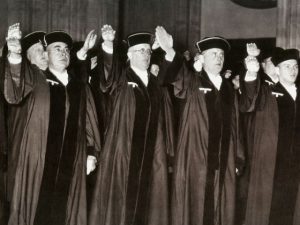 In post-WWI Germany, law had been a most respected entity, with the country thriving thanks to its most capable lawyers and judges, many of them Jewish. In 1933, no law could inhibit the Third Reich’s political and military rise to power. In a step-by-step process, the National Socialist government dismantled constitutional law, usurped justice and created a lethal totalitarian system that soon engulfed Germany and all of Europe. Redefining the nation as a pure political and biological organism, the Nazi government imposed legislation that reinforced its ideological program in all aspects of German life, with a focus on race, business, religion and medicine. Filmed at Boston College during a conference on Nazi law, as well as in Nuremberg, Munich and Dachau, this documentary relies on the expertise of scholars from Germany, France, Israel and the US. They come from the areas of medicine, law, Jewish Studies, theology and other disciplines.
In post-WWI Germany, law had been a most respected entity, with the country thriving thanks to its most capable lawyers and judges, many of them Jewish. In 1933, no law could inhibit the Third Reich’s political and military rise to power. In a step-by-step process, the National Socialist government dismantled constitutional law, usurped justice and created a lethal totalitarian system that soon engulfed Germany and all of Europe. Redefining the nation as a pure political and biological organism, the Nazi government imposed legislation that reinforced its ideological program in all aspects of German life, with a focus on race, business, religion and medicine. Filmed at Boston College during a conference on Nazi law, as well as in Nuremberg, Munich and Dachau, this documentary relies on the expertise of scholars from Germany, France, Israel and the US. They come from the areas of medicine, law, Jewish Studies, theology and other disciplines.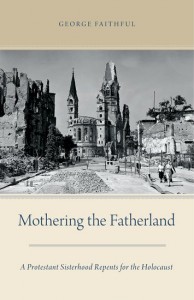 Mothering the Fatherland is a focused and sympathetic study of the life and work of a unique group of women who were so haunted by the Holocaust that, in the wake of the Second World War, they formed a Protestant sisterhood focused on intercessory repentance by the “true” Christians of Germany for the sins committed by the nation during the Third Reich. It is an absorbing work of historical theology that is especially significant for the effective manner in which the author situates the theology and practice of the sisterhood in their historical and intellectual contexts and for the author’s thoughtful analysis of the theology of the sisterhood’s co-founder.
Mothering the Fatherland is a focused and sympathetic study of the life and work of a unique group of women who were so haunted by the Holocaust that, in the wake of the Second World War, they formed a Protestant sisterhood focused on intercessory repentance by the “true” Christians of Germany for the sins committed by the nation during the Third Reich. It is an absorbing work of historical theology that is especially significant for the effective manner in which the author situates the theology and practice of the sisterhood in their historical and intellectual contexts and for the author’s thoughtful analysis of the theology of the sisterhood’s co-founder.